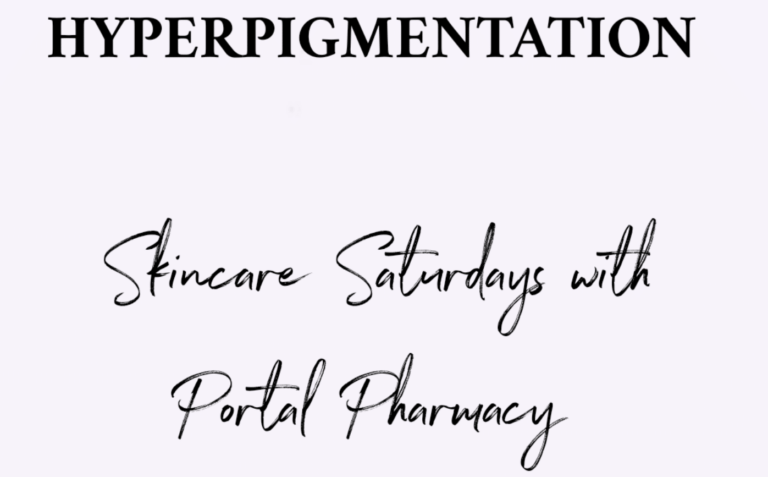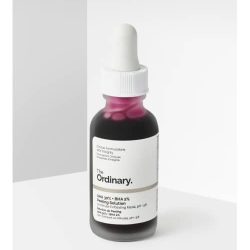What is hyperpigmentation?
Hyperpigmentation is a medical term used to describe darker patches of skin. These patches result from excess melanin production. Hyperpigmentation is not necessarily acne scarring.
Causes of Hyperpigmentation
Different factors can trigger the overproduction of melanin. They include:
- Sun exposure
- Hormonal changes/ influence e.g., in pregnancy
- Inflammation
- Age
- Medication
Types of Hyperpigmentation
- Melasma
- Age spots
- Sunspots
- Post-inflammatory hyperpigmentation
Melasma
Also called chloasma is a condition whereby brown patches appear on the face. It can be due to hormonal changes during pregnancy. Melasma due to pregnancy occurs mainly on the face and stomach. It self resolves after women give birth mostly.
Other causes of Melasma include:
- Hormonal contraceptives, hormone therapy.
- Certain skincare products
- Drugs that increase your sensitivity to the sunlight
- Trauma to the skin, such as a wound or superficial burn injury
Melasma is generally more common in women than men between the age of 20 and 50, and darker skin types since they are more prone to hyperpigmentation.
Hyperpigmentation or melasma isn’t generally harmful and usually isn’t a sign of a serious medical condition. In some cases, dark areas or spots will face on their own with good sun protection. In other cases, more aggressive treatment is needed. There’s no guarantee that the dark spots will fade completely even with treatment.
How to Prevent Hyperpigmentation
Sunscreen is the single most important factor in improving most cases of hyperpigmentation. We can’t stress enough just how important A good SPF is! Regardless of where you are, use sunscreen daily. Reapply it every 2 hours if you’re out in the sun- more frequently when you’re sweating or swimming. Your SPF should be at least 30.
Other ways to prevent hyperpigmentation include:
- Wearing hats or clothing that block sunlight
- Avoiding the sun during the time of the day when it’s strongest, which is typically 10a.m to 4p.m.
- Avoid medication that triggers hyperpigmentation
Treatment & Management options for Hyperpigmentation
It is very important to consult your dermatologist so that they can help you identify the cause of your hyperpigmentation and work with you to develop an appropriate treatment plan as well as monitor for any side effects of the treatment.
Treatment options include:
- Lightening creams
- Retinoids
- Hydroxy Acids
- Chemical peels
- Laser peels
- Microdermabrasion / dermabrasion
Lightening creams
Lightening creams or gels are over-the-counter products that help reduce pigmentation.
Common ingredients in lightening creams include:
- Hydroquinone- a highly abused skin ingredient that is only reserved for use on people with bad cases of Hyperpigmentation or melasma. It is also sometimes combined with other ingredients to help lighten the skin over time.
- Niacinamide
- Liqorice Extract
Exercise caution when purchasing OTC skin lighteners, as they may contain traces of mercury. Please consult with your dermatologist or doctor before purchasing any skin lightener.
Retinoids
Retinoids are available both as over-the-counter creams and in the prescription formula. OTC options are generally weaker and will take a couple of months for results to be notable. OTC retinoids are available as serums e.g., Cerave Resurfacing Retinol Serum. Prescription retinoids are available as creams like Differin Gel, and Acnesol. Retinoids also help with acne and wrinkles as well.
Alpha Hydroxy Acids
AHAs work by exfoliating, or shedding, the top layer of your skin. As a result, new skin cells emerge to replace the old ones which help even out complexion over time and improve skin texture.
These acids include:
- Glycolic acid
- Lactic acid
- Citric acid
- Malic acid
- Tartaric acid
- Other acids that are not necessarily AHAs that are great for managing hyperpigmentation include:
- Salicylic acid
- Azelaic acid
- Kojic acid
- Face acids work well for mild hyperpigmentation.
Over-the-counter products have these acids in low concentrations to minimize the risk of side effects. Some products like Demelan Cream combine different acids (glycolic, lactic, and Kojic) to produce better results.
Chemical peels
These are usually done using Face acids but at higher concentrations. They yield faster results but have a higher risk for side effects. Therefore, it is better to consult with your dermatologist before getting a chemical peel.
Side effects include burning, redness, irritation, and blistering and scarring.
Chemical peels cause your skin to be more sensitive to the sun’s rays. If you don’t adequately apply sunscreen, the sun may worsen your hyperpigmentation. Take extra precautions for at least one week after your last chemical peel.
An OTC chemical peel product available at Portal Pharmacy is The Ordinary AHA+BHA peeling solution




